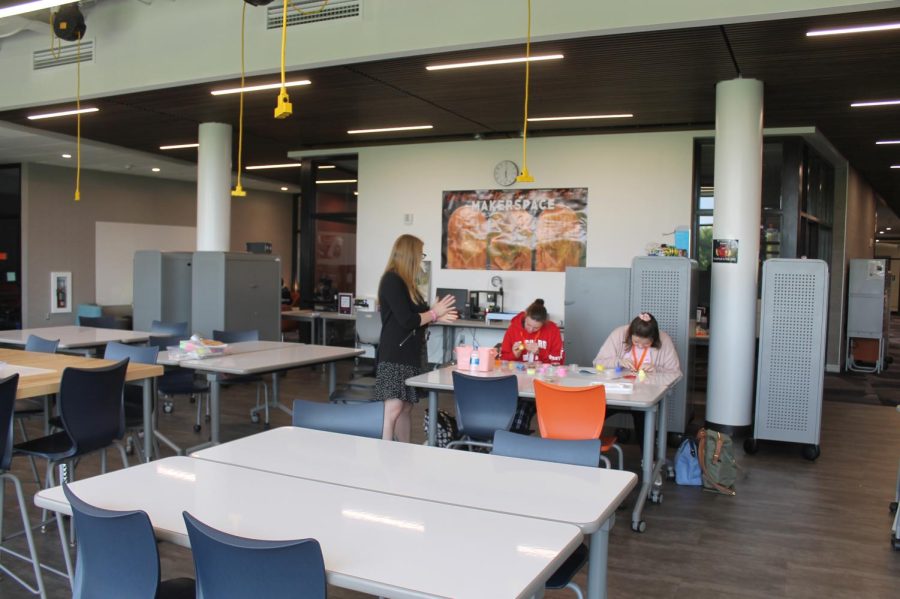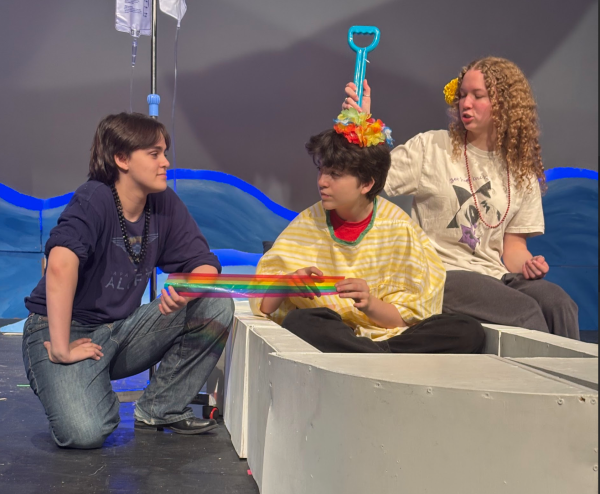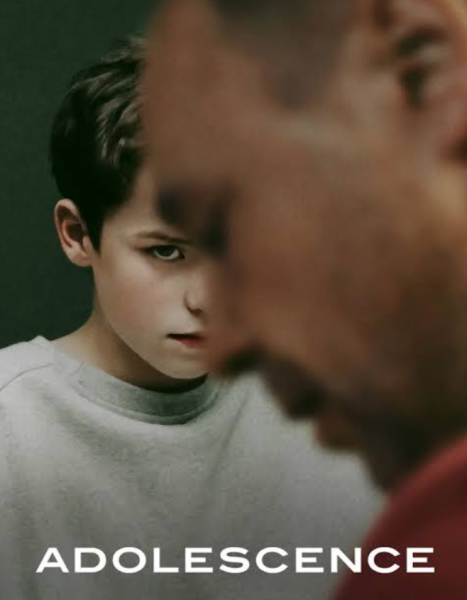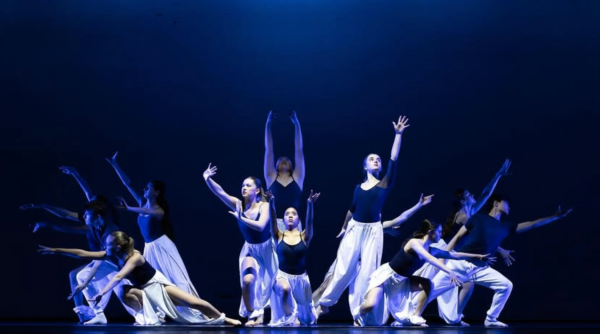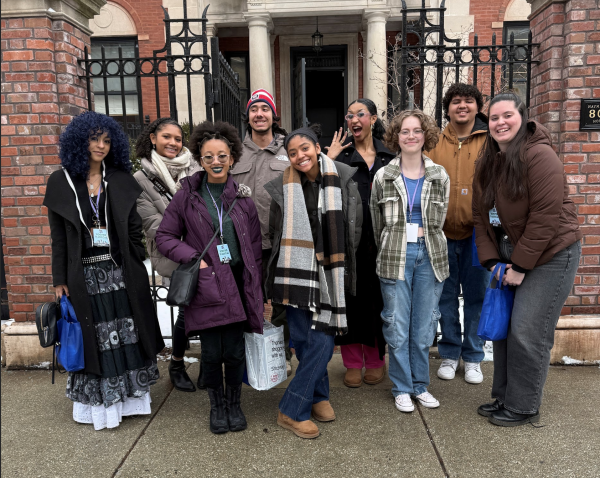New Makerspace supports hands-on creativity
Emily Levison, instructional technology coordinator, works with students in the Makerspace.
In 1968, researchers George Land and Beth Jarman administered a creativity test to 1,600 5-year-old children. Of that group, 98 percent scored at what the proctors called the “genius level.” The test was administered again to the same children at ages 10 and 15. By age 15, the “genius level” rate dropped to 12 percent. When the test was given to 280,000 adults, there was a 2 percent pass rate.
The new Makerspace at Oak Park and River Forest High School offers a way for students and faculty to revert to their 5-year-old selves and be as creative as possible.
Located on the second floor of the Student Resource Center (SRC), it provides a plethora of resources for people who would like to create their own masterpieces. Joseph Battaglia, an instructional technology coordinator at OPRF who works with students in the Makerspace, said, “We have something different every week during lunch that kids could do.” Weekly challenges are posted in the Daily Bulletin and sent out via email to students, parents, and teachers every day.
Anyone who has bought a set of LEGOs knows that children sometimes follow the instructions and othertimes use the pieces to build other things–a kind of creative freedom encouraged in the Makerspace, according to Battaglia. “They’re not just following a set of instructions,” he said. This kind of thinking applies in the classroom and outside the classroom, he added.
The Makerspace has 3D printers, a laser engraver, sewing machines and many low-tech supplies for students to use.
The Makerspace also has a state-of-the-art podcasting, recording and sound booth available to students. More information on this space can be found in this newspaper or by emailing Andrew Fredrickson, an instructional technology coach at OPRF, at [email protected]
Also found on the second floor of the SRC are several classrooms, a new and improved student technology help desk, and a slew of comfy chairs for students to relax in. Students can enjoy all these amenities during SRC hours: 7 a.m. to the end of the school day.
The space also features a newly designed tutoring center. Its new hours are from 3:11 p.m. to 7 p.m. from Mondays to Thursdays on both the second and third floors of the SRC.
According to Maureen Miller, director of instructional technology at OPRF, the school has invested a total of “$40,000 since the start of the 2019 school year into the Makerspace.”
The Makerspace is perfect for aspiring entrepreneurs who always have ideas for new inventions. “We also take student suggestions for what things the Makerspace should have… we want this to be mostly a student-run space,” Miller said. The goal of the Makerspace is to unlock students’ innate creativity and make creativity more prominent in curriculums in the future, according to Miller.
The Makerspace had a rough start when it opened during the 2019-2020 school year. During March of that year, COVID-19 put everything on hold and sent everyone into quarantine. The Makerspace was closed down until 2021, Miller said.
This year, the school is making an effort to promote Makerspace as a place for all students to feel welcome and share their ideas. Freshmen enrolled in launch classes and other students in study halls have been taken to visit the space. Makerspace facilitators issue weekly challenges, giving prizes for the best creations.
The ultimate goal is to create a space where students can make anything (school appropriate) that they want: a gym for the brain.

